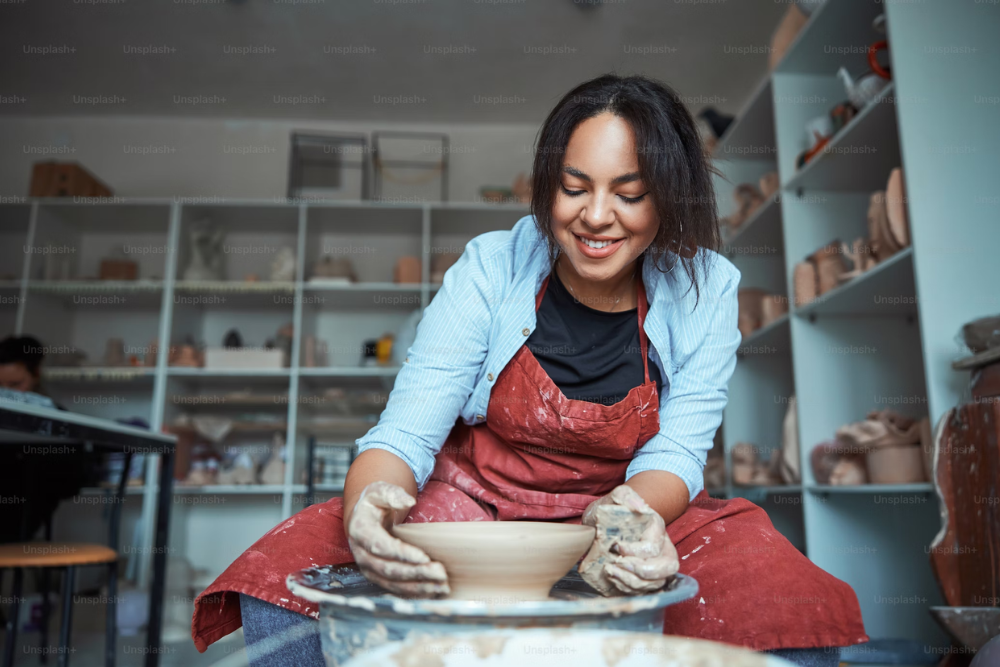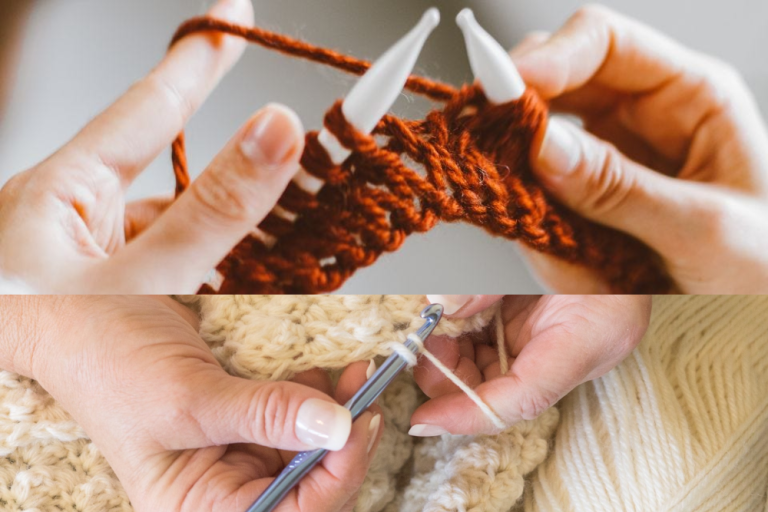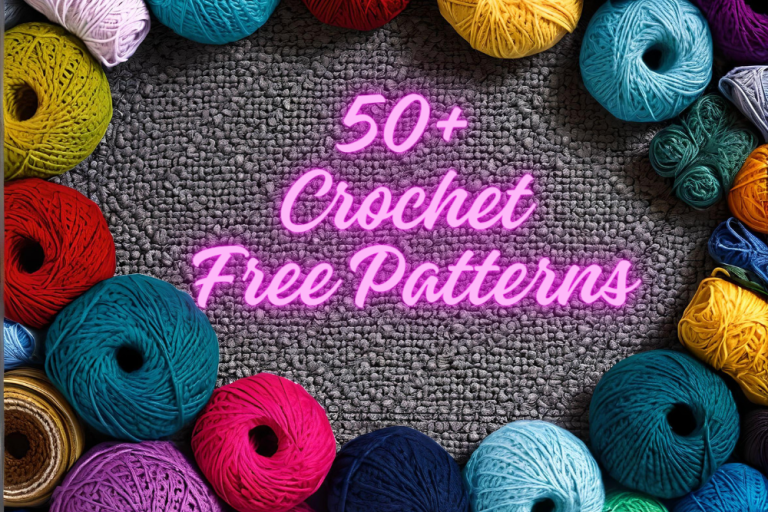Pottery Wheel Throwing: Crafting Art and Profit
Pottery, an age-old craft that has stood the test of time, offers a unique blend of artistic expression and potential profit. In this comprehensive guide, we will delve deep into the world of pottery wheel throwing. From understanding the basics to exploring the nuances of this craft, we’ll equip you with the knowledge and skills to embark on a journey that combines creativity and entrepreneurship.
What is Wheel Throwing? – Pottery on the Wheel in a Nutshell
Let’s kick off our exploration by unraveling the essence of wheel throwing in pottery. This age-old technique involves shaping clay on a rotating wheel to create various pottery forms. It’s an intricate dance between the potter’s hands and the spinning wheel, resulting in exquisite ceramic pieces.
Why is it Called Wheel Throwing?
The term “wheel-throwing” might sound peculiar at first, but its origins are rooted in the method itself. The pottery wheel, also known as a potter’s wheel, plays a pivotal role in this technique. It’s the tool that sets the stage for this mesmerizing art form.
Types of Equipment to Start Pottery Wheel Throwing
Embarking on a journey into the world of pottery wheel throwing is an exciting endeavor. To begin shaping clay into beautiful creations, you’ll need the right equipment. In this comprehensive guide, we’ll explore the various types of equipment essential for your pottery wheel-throwing adventure.
1. Pottery Wheel
The centerpiece of your pottery studio is, undoubtedly, the pottery wheel. This is where the magic happens. There are two main types of pottery wheels:
- Electric Pottery Wheel: Electric wheels are the most common choice for beginners and professionals alike. They are easy to use and provide consistent rotation speed, making it simpler to center and shape your clay.
- Kick Wheel: Kick wheels are operated manually by the potter using a foot pedal. They offer a more traditional and hands-on experience, requiring physical effort to keep the wheel spinning. Some potters prefer kick wheels for their tactile connection to the clay.
2. Clay
Selecting the right type of clay is fundamental to your pottery endeavors. There are several types to choose from, each with its unique properties:
- Stoneware Clay: Stoneware clay is known for its durability and versatility. It’s an excellent choice for functional pottery pieces like mugs, bowls, and vases.
- Porcelain Clay: Porcelain clay offers a smooth, fine texture and is favored for its ability to showcase intricate details. It’s often used for delicate and decorative pottery.
- Earthenware Clay: Earthenware clay is more porous and is commonly used for decorative and low-temperature firing projects. It’s ideal for creating colorful, glazed pottery.
3. Clay Tools and Shaping Accessories
A variety of tools and accessories are essential for shaping and detailing your clay creations:
- Throwing Tools: These include wooden or metal ribs used to shape and smooth the clay on the wheel.
- Cutting Tools: Wire and cutting tools are used to trim and remove excess clay from your piece.
- Shaping Tools: Wooden, plastic, or metal shaping tools help you refine the form and details of your pottery.
- Bats: Bats are flat, circular surfaces that you place your clay on while throwing. They can be easily removed from the wheel for drying or glazing.
4. Kiln
A kiln is essential for firing your pottery and turning it into a durable, finished piece. Kilns come in various types, including electric, gas, and wood-fired. Your choice of kiln depends on your budget, the type of pottery you create, and the size of your studio.
5. Glazes and Underglazes
Glazes add color, texture, and protection to your pottery. There are countless glaze recipes and colors to choose from. Underglazes, which are applied before glazing, allow for intricate detailing and painting on your pottery.
6. Kiln Furniture
Kiln furniture consists of shelves, posts, and stilts that help you stack and arrange your pottery inside the kiln during firing. Proper kiln furniture ensures even firing and prevents pieces from touching and fusing together.
7. Safety Gear
Safety should always be a priority when working with pottery equipment. Essential safety gear includes:
- Clay Apron: Protects your clothing from clay and glaze splatters.
- Dust Mask: Helps filter out clay dust particles, promoting better respiratory health.
- Safety Glasses: Shields your eyes from flying clay and debris.
- Heat-Resistant Gloves: Crucial for handling hot pottery and kiln shelves.
8. Workspace and Furniture
A well-organized workspace is vital for efficiency and creativity. Equip your pottery studio with:
- Work Table: A spacious table for wedging clay and preparing your pieces.
- Shelving: For storing clay, tools, glazes, and finished pottery.
- Sink: An accessible sink for cleaning up clay and glaze messes.
- Stools or Chairs: Comfortable seating options for long pottery sessions.
9. Studio Essentials
These additional items will make your pottery journey smoother:
- Buckets: For water and clay recycling.
- Sponges: Used to keep your hands and clay wet during throwing.
- Calipers: Measuring tools to ensure consistent thickness in your pottery.
- Scale: For accurately measuring clay and glaze ingredients.
10. Firing Supplies
To complete your pottery projects, you’ll need firing supplies like kiln wash, pyrometric cones (for tracking firing temperatures), and firing tongs for safely loading and unloading pottery from the kiln.
As you venture into the world of pottery wheel throwing, acquiring the right equipment is essential to your success and enjoyment of the craft. Invest in quality tools and materials, and don’t forget to maintain and clean your equipment regularly to ensure longevity. With dedication and practice, you’ll be creating stunning pottery pieces in no time.
The Basic Steps Involved in Wheel Throwing
Wheel throwing in pottery is a fascinating process that allows you to shape clay into various forms using a spinning wheel. Let’s break down the basic steps involved in this intricate art form, from preparing the clay to adding those final artistic touches.
1. Preparing The Clay
The journey of wheel throwing begins with selecting the right type of clay. Potters often choose between stoneware, porcelain, and earthenware clays, each with its unique properties. Once you have your clay, it’s time to prepare it for the wheel.
– Choosing the Clay
Select a clay body that suits your project. Stoneware clay is known for its durability and versatility, while porcelain offers a smooth, fine texture for intricate work. Earthenware clay, on the other hand, is more porous and is often used for decorative pottery.
– Wedging
Before you start throwing on the wheel, it’s crucial to remove air bubbles and ensure uniform consistency in the clay. This process, known as wedging, involves kneading the clay by hand to eliminate any imperfections.
2. Centering the Clay
Once your clay is properly prepared, the next step is to center it on the pottery wheel. Centering is the foundation of wheel throwing, and mastering this skill is essential for creating balanced pottery.
– Placing the Clay on the Wheel
Position a lump of clay in the center of the wheel head. Ensure that it is firmly secured to the wheel’s surface.
– Starting the Wheel
Turn on the wheel at a slow speed. As it begins to rotate, use your hands to gently apply pressure to the clay, encouraging it to stick to the wheel head.
– Centering the Clay
Using the palms of your hands, apply steady pressure while keeping your hands wet to reduce friction. Gradually, the clay will become perfectly centered on the wheel.
3. Opening the Clay
With the clay centered, it’s time to create an opening in the center of the clay. This opening will serve as the foundation for your pottery piece.
– Creating a Divot
Use your thumbs to press down into the center of the clay, creating a small divot. This divot will eventually become the interior of your pottery piece.
4. Pulling the Clay
Now comes the exciting part – shaping the clay. By pulling and lifting the clay walls, you’ll begin to transform it into your desired form.
– Wetting the Clay
Keep the clay moist by adding water regularly. This ensures that your hands can glide smoothly over the surface without sticking.
– Forming the Walls
Gently squeeze the clay between your fingers while using your other hand to support the exterior. Gradually, the walls of your pottery piece will start to rise.
– Shaping
As you continue pulling the clay upward, you can shape it into various forms such as cylinders, bowls, or vases. The speed and pressure you apply will determine the thickness and shape of your creation.
5. Finishing Touches
Wheel throwing is not just about forming the basic shape; it’s also about adding those finishing touches that give your piece character and style.
– Smoothing
Use a sponge or rib tool to smooth the exterior surface of your pottery. This helps remove any imperfections and gives your piece a polished appearance.
– Trimming
Trimming involves using a trimming tool to refine the base and foot of your pottery piece. This step adds stability and a professional finish.
6. Throwing and Pulling
Throughout the wheel-throwing process, you’ll alternate between throwing (shaping the exterior) and pulling (shaping the interior). This delicate balance between inside and outside is what gives your pottery piece its unique form and character.
– Throwing
During the throwing phase, focus on shaping the outer walls of your pottery piece. Pay attention to details and aesthetics as you refine the exterior.
– Pulling
Switch to the pulling phase to shape the interior of your pottery. This step ensures that the walls are even and that the piece maintains its structural integrity.
Mastering the art of wheel throwing takes time and practice. Each potter develops their unique style and technique, making wheel throwing a deeply personal and rewarding craft. So, grab some clay, hop on a pottery wheel, and let your creativity spin into beautiful, handcrafted pottery.
Different Types of Wheel Throwing
Wheel throwing in pottery is a versatile art form that offers a wide array of techniques and styles. As you delve deeper into the world of pottery, you’ll discover various approaches to wheel throwing, each with its unique characteristics and creative possibilities. In this detailed exploration, we’ll delve into different types of wheel throwing to inspire your pottery journey.
1. Traditional Wheel Throwing
Traditional wheel throwing adheres to classic pottery forms and techniques that have been practiced for centuries. It focuses on creating functional and utilitarian pottery items. Here’s what you need to know:
- Forms: Traditional wheel throwing produces everyday items like bowls, plates, mugs, and vases. These pieces are known for their practicality and timeless design.
- Techniques: Potters using this style emphasize consistency and precision in shaping their pottery. Symmetry, even walls, and well-balanced forms are the hallmarks of traditional wheel-thrown pieces.
- Glazing: Traditional pottery often features classic glaze combinations, such as earthy tones and solid colors. The emphasis is on functionality rather than elaborate decoration.
2. Sculptural Wheel Throwing
Sculptural wheel throwing is a departure from traditional forms, allowing potters to push the boundaries of creativity. This approach transforms clay into artistic sculptures and abstract pieces:
- Forms: Sculptural wheel throwing results in non-functional, decorative pieces. These can range from abstract sculptures to intricate figurative works of art.
- Techniques: Potters in this category prioritize artistic expression over functionality. They experiment with asymmetrical shapes, textures, and unconventional forms.
- Glazing: Sculptural pieces often feature unique and artistic glaze treatments. These can include bold colors, intricate patterns, and experimental surface effects.
3. Altered Wheel Throwing
Altered wheel throwing is a fascinating technique that involves manipulating clay forms while they are still wet on the wheel. This approach leads to unexpected and creative outcomes:
- Forms: Altered wheel throwing begins with a basic wheel-thrown form, which is then altered and reshaped into something entirely different. Common alterations include twisting, stretching, and folding the clay.
- Techniques: Potters practicing this style embrace spontaneity and adaptability. They allow the clay to guide their creative process, resulting in unique, one-of-a-kind pieces.
- Glazing: The glaze choices for altered wheel-thrown pottery vary widely. Potters often experiment with glaze combinations that enhance the altered textures and forms.
4. Miniature Wheel Throwing
For those who enjoy intricate details and precision, miniature wheel throwing is a captivating avenue to explore:
- Forms: Miniature wheel throwing focuses on crafting tiny pottery pieces with exquisite detail. This can include miniature vases, teacups, and delicate decorative items.
- Techniques: Precision and control are paramount in this style. Potters work meticulously to create miniature versions of traditional pottery forms.
- Glazing: Glazing miniature pottery requires a steady hand and a keen eye for detail. The choice of glaze can enhance the delicate features of these small-scale creations.
5. Functional and Artistic Fusion
Some potters prefer to blend functionality with artistic expression, creating pieces that serve both utilitarian and aesthetic purposes:
- Forms: This style produces pottery items that are functional in daily life but also possess artistic elements. Examples include bowls with intricate designs or mugs with hand-painted artwork.
- Techniques: Potters in this category strike a balance between form and decoration. They often use wheel-throwing techniques to create the base form and then add artistic embellishments by hand.
- Glazing: Glazing choices vary depending on the desired effect. Functional and artistic fusion pieces may feature both matte and glossy glazes to highlight specific design elements.
In the world of wheel throwing, the possibilities are endless. Whether you’re drawn to traditional forms, sculptural experiments, altered creations, miniature marvels, or a fusion of functionality and artistry, each type of wheel throwing offers a unique avenue for creative expression.
Among the crafts of Pakistan Pottery wheel throwing is top-notch, along with basketball stitching, and other stuff.
Size of Wheel Throwing Matters
When it comes to pottery wheel throwing, the size of your creations is a crucial factor to consider. Different wheel sizes cater to varying pottery dimensions, and your choice of wheel should align with your artistic vision. Smaller wheels are ideal for compact pieces, while larger wheels accommodate grander designs.
To Sit or Not to Sit
One common dilemma among potters is whether to sit or stand while working on the pottery wheel. This decision often comes down to personal preference and comfort. Sitting provides stability and control, while standing allows for more mobility. Experiment with both positions to determine which suits your style best.
Wheel Throwing Projects: Unleash Your Creativity
Wheel throwing in pottery opens up a world of artistic possibilities. As you become proficient in the basic steps of this craft, you can embark on various exciting projects that showcase your creativity and skill. In this section, we’ll delve into some wheel throwing projects that will not only hone your pottery skills but also result in stunning, functional pieces of art.
1. Mugs and Cups
Mugs and cups are classic pottery items that make for fantastic wheel throwing projects, especially if you’re a beginner. Here’s how you can create your own custom drinkware:
– Shaping the Body
Start by centering your clay on the wheel and opening it to create the basic shape. Pull the clay upward while maintaining an even thickness to form the walls of the mug or cup. Consider the size and style you want to achieve.
– Adding Handles
To turn your piece into a functional mug, you’ll need a handle. You can craft handles separately and attach them later, or pull a handle directly from the body of the mug. Handles can be pulled, coiled, or extruded to achieve various designs.
– Texturing and Decoration
Before your piece dries completely, you have the option to add texture or decorative elements. You can create patterns, carve designs, or apply slip (liquid clay) for unique surface effects. Remember to smooth any seams or joints for a polished look.
– Glazing
Once your pottery has dried and been bisque-fired, it’s time to glaze it. Glaze not only adds color but also seals the surface, making your drinkware safe for use. Experiment with different glaze combinations to achieve your desired finish.
2. Bowls Galore
Bowls are another popular choice for wheel-throwing projects, offering endless possibilities in terms of size and design. Here’s how you can get started:
– Exploring Bowl Shapes
One of the exciting aspects of making bowls is the variety of shapes you can create. From shallow pasta bowls to deep cereal bowls, each shape serves a specific purpose and aesthetic. Decide what kind of bowl you want to make and center your clay accordingly.
– Rimming and Finishing
The rim of a bowl plays a significant role in its functionality and appearance. You can create a flared, classic, or decorative rim based on your design vision. After shaping the bowl’s walls, refine the rim to your desired style.
– Incorporating Patterns
Bowls are excellent canvases for intricate patterns and textures. You can use carving tools, stamps, or even natural objects like leaves to imprint designs onto the surface. Ensure that your patterns are symmetrical and well-executed.
– Glaze Variety
Bowls can be vibrant centerpieces or subtle complements to your tableware. Experiment with glaze colors and combinations to achieve the desired aesthetic. Consider matching or contrasting your bowls with other pottery pieces you’ve created.
3. Vases and Planters
Wheel throwing allows you to create elegant vases and planters that can adorn your living space with greenery and blooms. Here’s how you can bring your floral fantasies to life:
– Forming the Base
Begin by shaping the base of your vase or planter. Decide whether you want a wide, stable base or a more slender, delicate one. Ensure that the base is even and centered to prevent wobbling.
– Height and Proportion
The height and proportion of your vase or planter are crucial for its functionality and aesthetics. Pull the clay upward to create the desired height, considering the type of flowers or plants it will hold.
– Incorporating Drainage
For planters, it’s essential to incorporate a drainage hole to prevent overwatering. You can achieve this by piercing the bottom of the piece or adding a separate drainage dish.
– Decorating the Surface
Enhance the visual appeal of your vases and planters by adding decorative elements. Carving, slip trailing, or using underglaze designs can transform a simple piece into a work of art.
– Glazing Techniques
The choice of glaze can dramatically affect the appearance of your vase or planter. Matte, glossy, or textured glazes can give your piece a unique character. Consider matching the glaze to the colors of the flowers or plants you plan to display.
4. Sculptural Delights
If you’re feeling adventurous and want to push the boundaries of traditional pottery, sculptural wheel throwing might be your calling. Here’s how you can embark on this creative journey:
– Freeform Expression
Sculptural wheel throwing allows you to break free from traditional vessel forms. Start by centering a substantial piece of clay and let your imagination run wild. You can create abstract sculptures, figurative pieces, or experimental art.
– Exploring Texture and Detail
Experiment with texture and detail by incorporating various tools, techniques, and attachments. Consider adding coils, extruded forms, or carved elements to your sculpture. Texture can breathe life into your piece.
– Balancing Act
Sculptural pieces may challenge the laws of balance and gravity. Ensure that your piece is structurally sound and won’t collapse during drying, firing, or display. Reinforce weak points if necessary.
– Unique Finishes
Since sculptural pottery pieces may not have a functional purpose, you have the freedom to explore unconventional finishes. These can include experimental glazing techniques, unconventional materials, or even mixed-media elements.
What Types of Clay Are Best for Wheel Throwing?
Selecting the right type of clay is a crucial decision for potters, especially those engaged in wheel throwing. The choice of clay not only affects the working process but also influences the final appearance and durability of your pottery. In this comprehensive guide, we’ll explore the different types of clay that are best suited for wheel throwing.
1. Stoneware Clay
Stoneware clay is one of the most popular choices for wheel throwing due to its versatility and durability. Here’s what you need to know:
- Characteristics: Stoneware clay is known for its plasticity, which makes it easy to shape and manipulate on the wheel. It has a smooth texture and is typically gray or buff in color.
- Firing Range: Stoneware clay is fired at high temperatures, typically between 2,200°F to 2,400°F (1,200°C to 1,315°C). This high firing temperature makes stoneware pottery dense and strong.
- Advantages: Stoneware pottery is durable, making it suitable for functional items like mugs, bowls, and vases. It is also less porous, so it’s less likely to absorb liquids and is more resistant to cracking or chipping.
- Glazing: Stoneware pottery is often glazed to create a watertight and food-safe surface. The glazes can vary from glossy to matte, and they come in a wide range of colors.
2. Porcelain Clay
Porcelain clay is renowned for its fine texture and ability to showcase intricate details. It’s an excellent choice for those looking to create delicate and refined pottery:
- Characteristics: Porcelain clay is exceptionally smooth and white. It has a high plasticity, making it perfect for intricate work on the wheel.
- Firing Range: Porcelain is fired at high temperatures, similar to stoneware, typically around 2,200°F to 2,400°F (1,200°C to 1,315°C). This high firing temperature ensures the pottery’s strength and translucency.
- Advantages: Porcelain pottery is known for its translucency, allowing light to pass through thin sections. It’s often used to create delicate items like teacups, figurines, and fine china.
- Glazing: Porcelain can be glazed to achieve a smooth, glossy finish that enhances its beauty. Many potters use clear or lightly tinted glazes to showcase the clay’s whiteness.
3. Earthenware Clay
Earthenware clay is an accessible and versatile choice for wheel throwing, particularly for those who enjoy decorative and low-temperature firing projects:
- Characteristics: Earthenware clay has a warm, reddish-brown color and a lower firing temperature. It’s known for its ease of use and workability on the wheel.
- Firing Range: Earthenware is typically fired at lower temperatures, around 1,800°F to 2,100°F (980°C to 1,150°C). This lower firing temperature results in porous pottery that is not as strong as stoneware or porcelain.
- Advantages: Earthenware pottery is suitable for decorative and colorful pieces. It’s often used for tiles, sculptures, and pottery that don’t require high durability.
- Glazing: Earthenware pottery can be glazed in a wide range of colors and finishes. Vibrant, colorful glazes work well with this type of clay, making it ideal for decorative and artistic pieces.
4. Raku Clay
Raku clay is a specialized type of clay known for its use in the raku firing technique, which produces unique and often dramatic results:
- Characteristics: Raku clay varies in composition but is typically highly grogged, which means it contains small pieces of pre-fired clay. This gives it a textured and gritty feel.
- Firing Range: Raku firing is done at lower temperatures, around 1,600°F to 1,900°F (870°C to 1,040°C). The quick firing and cooling process in raku firing leads to unpredictable glaze effects and crackle patterns.
- Advantages: Raku pottery is prized for its unpredictability and the spontaneous effects achieved during firing. It’s often used for decorative pieces, sculptures, and artistic experiments.
- Glazing: Raku pottery is known for its distinctive glaze effects, including metallic lusters, crackles, and iridescence. Potters often use special raku glazes to achieve these effects.
When selecting clay for wheel throwing, consider the type of pottery you want to create, your firing capabilities, and your skill level. Each type of clay offers unique opportunities for creativity, so don’t hesitate to experiment and find the clay that best suits your artistic vision. Whether you choose stoneware, porcelain, earthenware, or raku clay, your pottery journey will be a rewarding and fulfilling one.
Final Thoughts On Pottery Wheel Throwing
In conclusion, pottery wheel throwing is a captivating blend of artistry and craftsmanship. Whether you’re a novice or an experienced potter, the wheel offers endless possibilities for creativity. From traditional forms to avant-garde sculptures, the wheel is your canvas, and the clay is your medium.
But it doesn’t end with creativity; pottery wheel throwing can also be a profitable endeavor. As the demand for handmade, unique ceramics continues to grow, your creations can find a market in both local boutiques and online platforms.
Remember, every masterpiece starts with a lump of clay and a vision. So, roll up your sleeves, embrace the mesmerizing spin of the wheel, and let your artistic journey in pottery wheel throwing begin!







